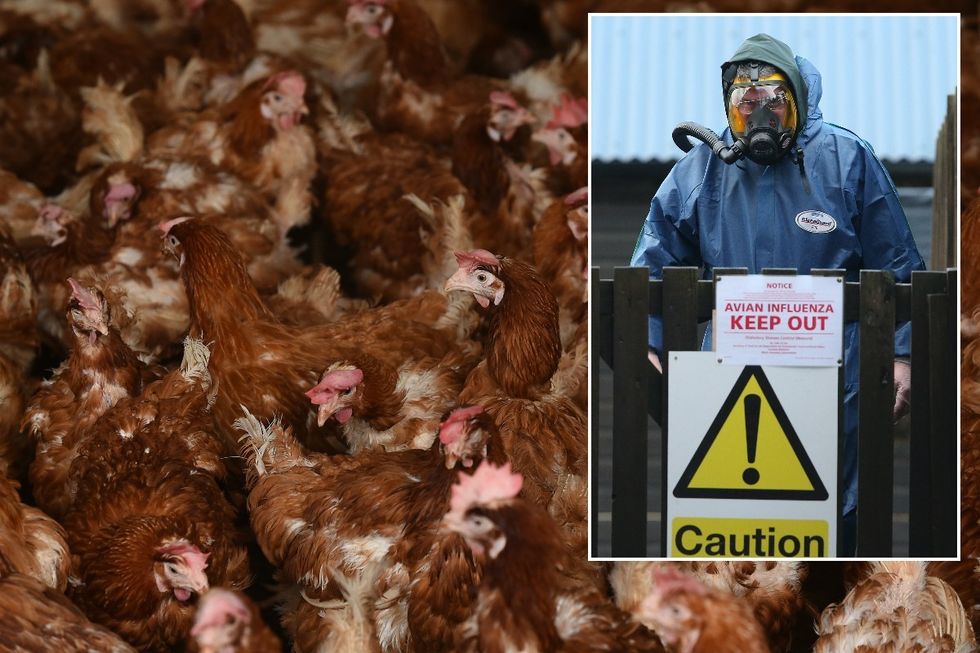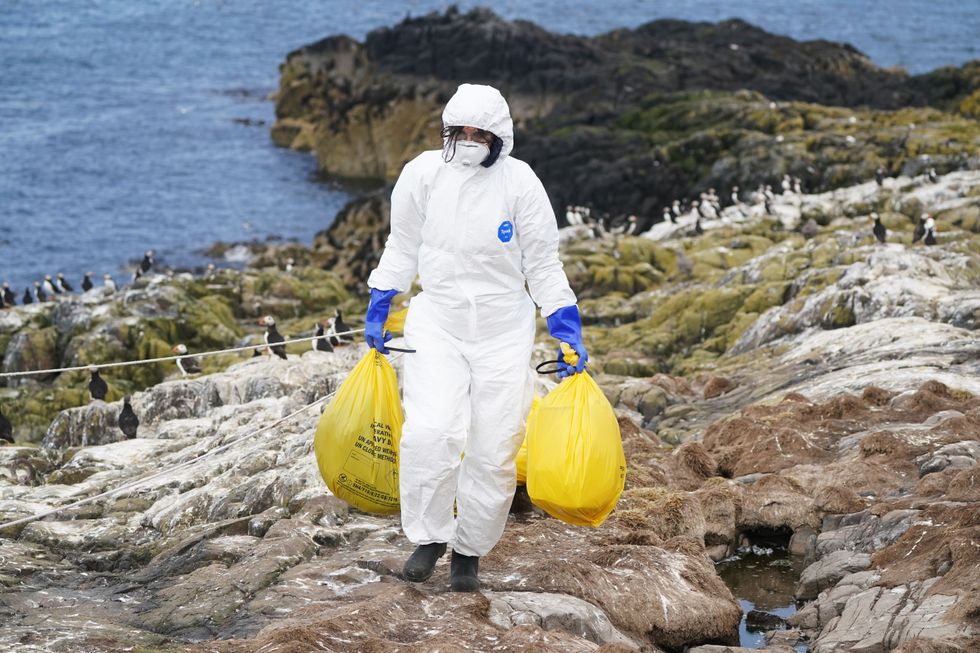Oliver Trapnell
Guest Reporter

A virologist has issued a warning over a new strain of bird flu after an outbreak was detected at a poultry farm in East Yorkshire.
Tests at the site near Hornsea revealed the presence of the H5N5 strain of avian influenza.
The Department for Environment, Food and Rural Affairs (Defra) announced the discovery on Tuesday marking the second bird flu outbreak in England this year, following a previous case in February.
Following the discovery, health officials established a 3km protection zone and a wider 10km surveillance zone around the affected site.
Asked by GB News about the specifics of the new outbreak, the UK Health Security Agency (UKHSA) reassured Britons that the risk to the public was “very low”.
Richard Puleston, Head of Acute Respiratory Infections Unit, UKHSA said: “The current risk to the UK population from avian influenza remains very low.

“However, the virus can spread to people following close contact with infected birds or mammals and we closely monitor people who have been exposed to learn more about these risks.
“Viruses constantly evolve, and we remain vigilant for any evidence of changing risk to the population.
“UKHSA has established preparations in place for detections of human cases of avian flu and stands ready to initiate an appropriate public health response should it be needed.”
As part of Defra's containment strategy, all poultry at the East Yorkshire site were humanely culled.
Bird keepers have been urged to remain vigilant and implement measures to protect their stock, as the virus can spread through birds' droppings, saliva, and contaminated feed and water.

Professor Paul Digard, Chair of Virology at The Roslin Institute at the University of Edinburgh, echoed Puleston’s reassurance to the wider public.
The career virologist who specializes in influenza, told GB News: “The risk to the general public is very low from the European/UK strains of H5 avian flu in general and for the current H5N5, I’m not aware of any recorded infections in people.
“There is epidemic potential from H5 (flu is very changeable and the behaviour of new strains is sometimes hard to predict) but the risk from the US H5N1 ‘cow flu’ strain is much higher, in my opinion.
“That particular strain has not been seen this side of the Atlantic though.”
The antiviral specialist who has advised both the NHS and Government bodies, said vaccines are available for bird flu and suggested that with “decent biosecurity”, the “risk of the virus spreading further to people or other domesticated animals” should be reduced.
When asked what was concerning about the H5N5 strain and whether it could have epidemic or pandemic potential, Digard said: “I wouldn’t necessarily single out H5N5 in particular.
“This is ‘just’ the latest iteration of Clade 2.3.4.4b H5 avian influenza, which caused havoc in UK poultry and wild birds a couple of years ago but to which (hopefully) wild birds now have some immunity to which might limit the spread of this novel version.
“This should reduce the risk to poultry (less virus around) and so, with decent biosecurity, should reduce the risk of the virus spreading further to people or other domesticated animals.
“The risk is more that it’s a new variant, so there is an element of waiting to see how it behaves and for experts (e.g. in the UK Flu Trailmap consortia) to assess it in the lab, just in case it has unwelcome surprises for us.
“The behaviour of the US strain of H5 (H5N1 B3.13) is more worrying, as it seems to be widespread in birds and dairy cattle and from there it has caused a number of human infections; though thankfully none severe.
“The primary worry is that this chain of infections in the USA could act as a gateway for the virus to change its behaviour further, become more infectious for people and transmit between them – and that’s the potential start of an epidemic or even a pandemic.”

Digard said that individuals can help reduce the chance of infection by “avoiding contact with dead birds, especially if seen in numbers” and suggested that the public should report sightings of multiple dead birds to Defra.
He also advised to keep pets away from them too.
In wild birds, the risk risk level for H5 strain bird flu has been elevated from medium to high.
The Food Standards Agency has confirmed that bird flu poses minimal food safety risk, with properly cooked poultry products, including eggs, remaining safe to consume.
Find Out More...
